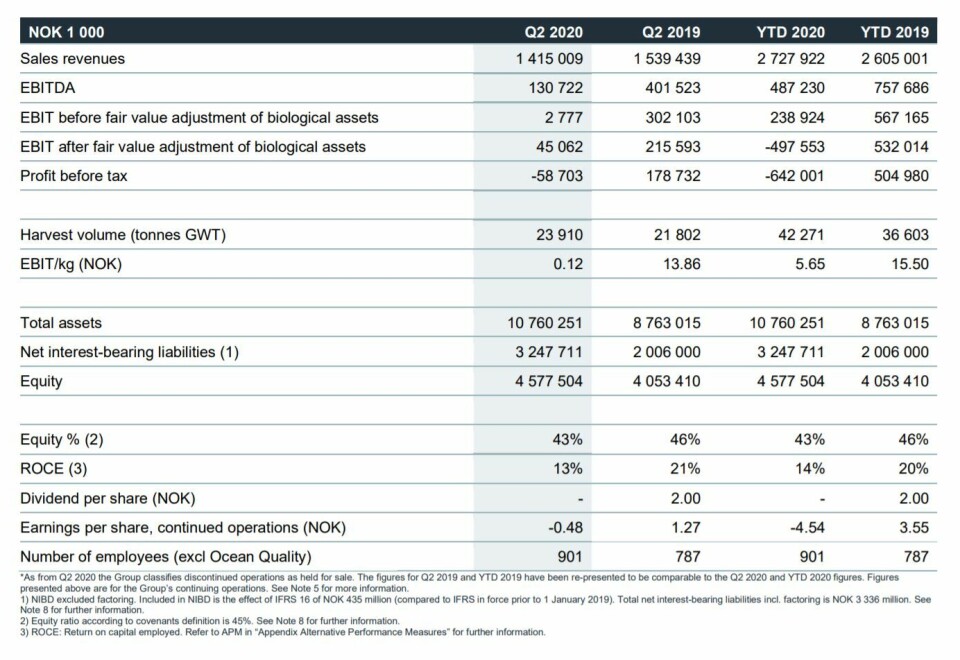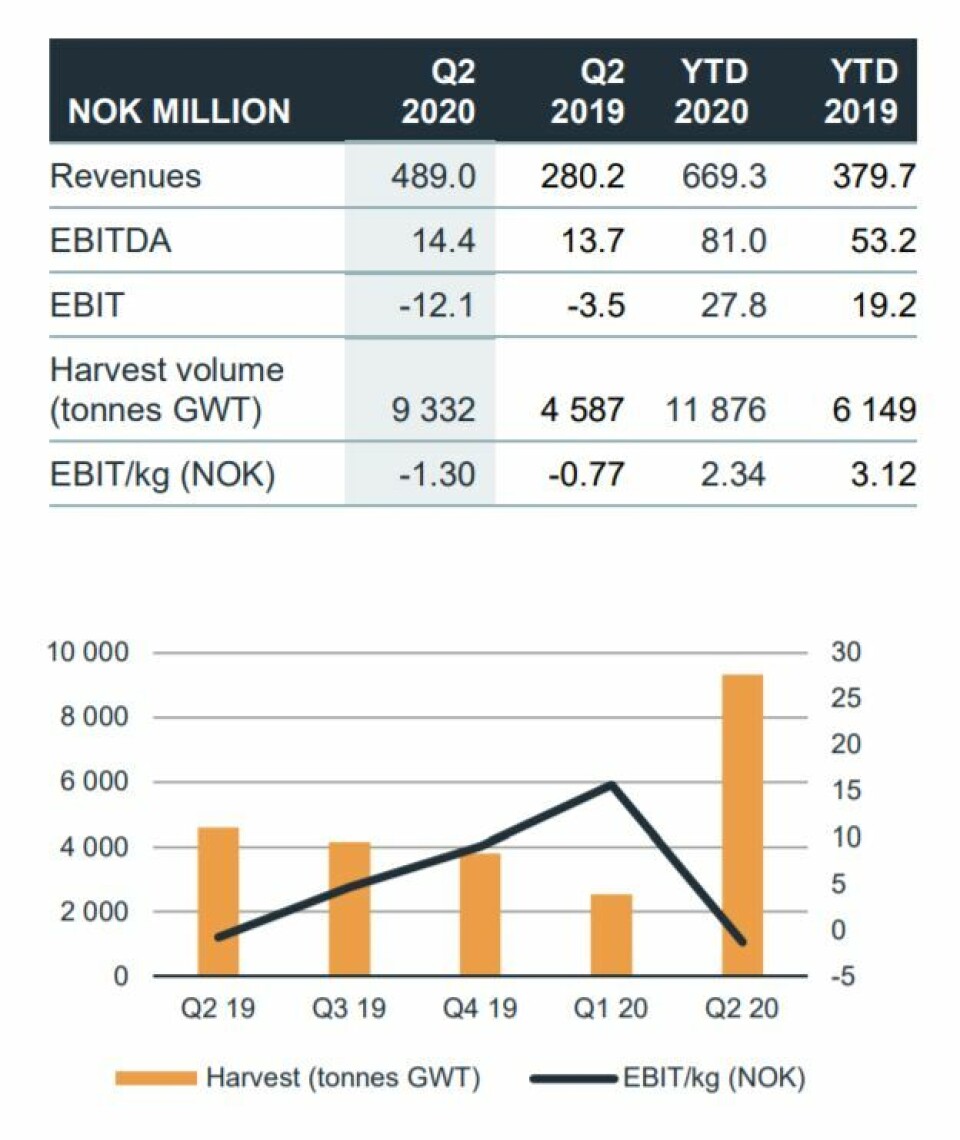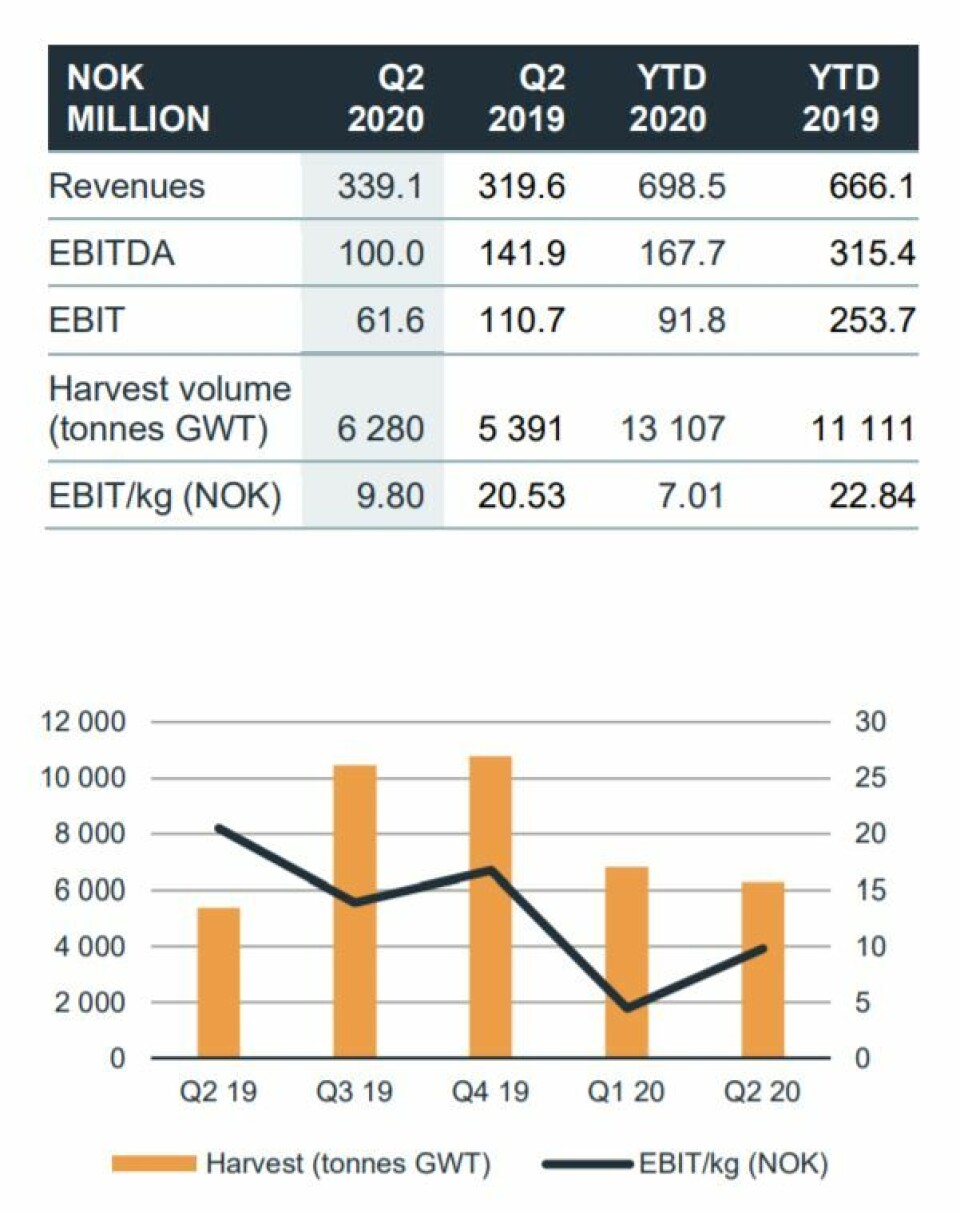
Grieg’s operating profit falls by 99% in Q2
Salmon farmer Grieg Seafood’s operating profit (EBIT) plunged by NOK 299 million (£25.7m) to just NOK 3m in the second quarter of this year compared to NOK 302m in the same period last year.
Chief executive Andreas Kvame said Q2 was impacted by the continuous effect of the Covid-19 pandemic, with low prices throughout the quarter and continuing into Q3 because increasing volumes of salmon “have not been absorbed by the virus ridden markets as easily as usual”.
Slow growth of fish due to cold temperatures, winter ulcers, reduced survival due to lice treatments, and algal blooms have also had an impact.

US disruptions
“We have particularly seen disruptions in the US market due to Covid-19, which is mainly supplied by our British Columbia (BC) region,” said Kvame in Grieg’s Q2 report today.
“However, lower prices in the US have been matched by improved biology, lower costs and increased competitiveness in BC. We see positive effects from our algae mitigation systems, which has reduced mortality caused by seasonal harmful algae blooms. As such, both fish welfare and our ability to withstand lower prices are improved. All in all, we keep calm as we partly see the price reduction as a seasonal effect, and we seize this opportunity to build a larger customer base for the future.”
Kvame said that in Grieg’s two Norway regions, Finnmark and Rogaland, underlying biology remained strong.
Reduced growth
“However, due to low seawater temperatures during the winter and spring, we have experienced reduced growth in Finnmark,” said the CEO.
“Based on this external factor in combination with expectations of low market prices in the short term, we have decided to optimise production, utilise our existing licences and postpone some harvest to 2021. While this move retrieves more value from our fish, the harvest volume for the Group will be reduced to 95,000 tonnes (from 100,000 tonnes) in 2020.
“In Shetland (see separate report here), cost has remained high during the quarter, due to few synergies between our operations on the Shetland isles and Skye in Scotland.
“In our new Newfoundland region, the first eggs were put into the hatchery in July, according to schedule. First harvest is expected in 2022/23. We maintain our long-term ambitions to produce 150,000 tonnes in 2025.”

Bigger harvest in BC
Grieg Seafood BC harvested 9,332 tonnes in Q2, up from 4,587 tonnes in Q2 2019. The increase is due to cyclicality of the site utilisation and fallowing procedures in the region.
The volume was 668 tonnes below guidance because of a decision to delay some harvest in the expectation that prices will rise.
Revenue for the quarter was NOK 489m (CAN $73m), an increase of 74% compared to Q2 2019, driven by the higher harvest volume but offset by lower market prices compared to Q2 2019. EBIT per kg was NOK -1.30.
Lower prices than Europe
“The salmon market in North America was challenging during the quarter, resulting in significantly lower average sales price compared to our European regions,” stated Grieg.
“The superior share was 87% in the quarter compared to 89% in Q2 2019, but with a higher average harvest weight.
“Biological conditions have been somewhat challenging during Q2 2020, with harmful algae blooms (HAB) negatively impacting feeding. Due to our algae mitigation system, we managed to limit the impact, and the 12-month survival rate increased from 89% at end of Q1 2020 to 90% at the end of Q2 2020.”
Grieg said success at mitigating HABs and increasing fish survival had led it to increase its targeted 2020 harvest volume in BC from 20,000 to 22,000 tonnes.

Lower survival rate
Grieg harvested 4,527 tonnes (Q2 2019: 8,526) in Rogaland, making EBIT/kg of NOK 8.89 (Q2 2019: 27.22). Earnings were impacted by low harvest volume and low market price
Loss of fish due to sea lice treatment and cardiomyopathy syndrome (CMS) at three sites reduced the 12-month survival rate to 88% (94%).
Smolts with an average size of 550g were transferred to sea.
The region expects to harvest of 5,300 tonnes in Q3 2020 with lower cost/kg due to higher harvest volume. Harvest expectation of 25,000 tonnes in 2020 is maintained.
The company harvested 6,280 tonnes (5,391) in Finnmark, making EBIT/kg of NOK 9.80 (20.53). Earnings were impacted by lower market price and weaker price achievement. The superior share was impacted by quality downgrades related to winter ulcers.
Grieg Finnmark expects to harvest of 4,500 tonnes in Q3 with lower cost/kg. The harvest estimate for 2020 has been reduced to 33,000 tonnes (38,000) due to slower growth than expected in seawater.






















































